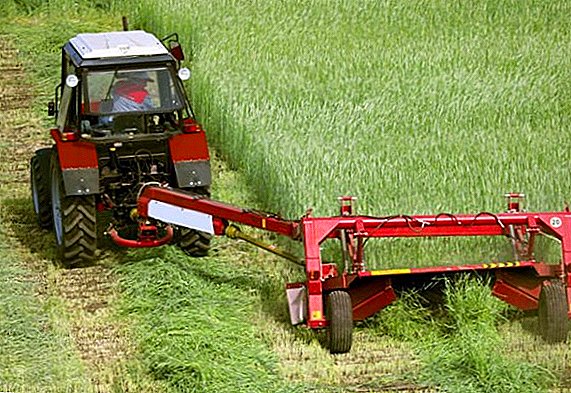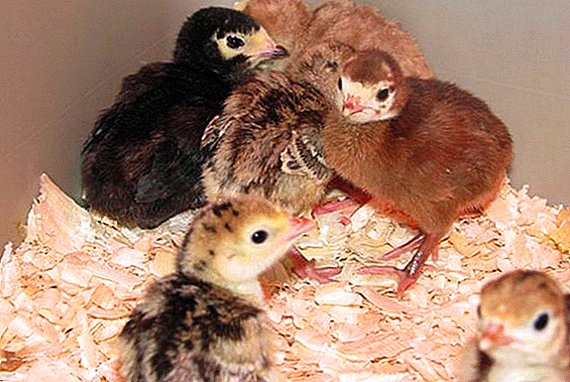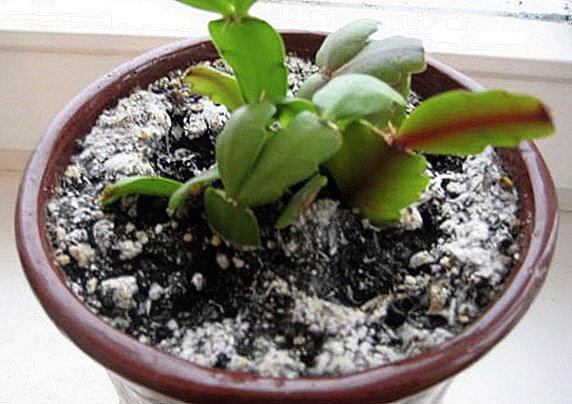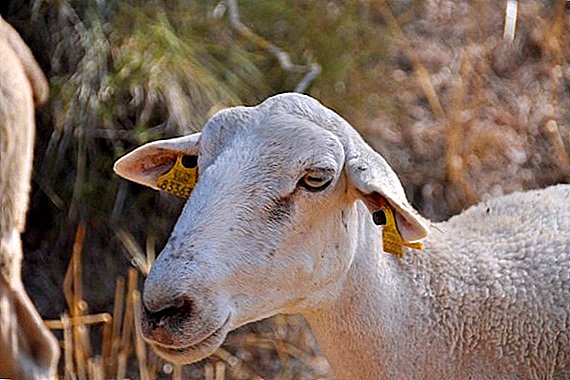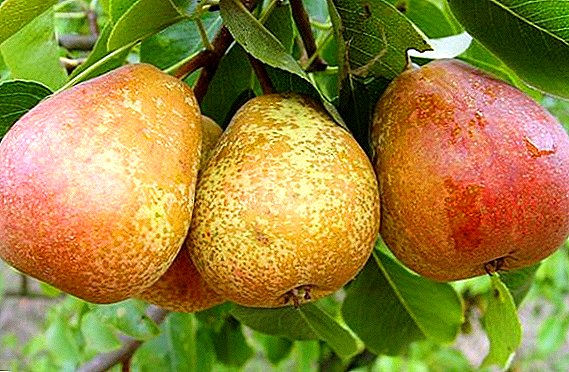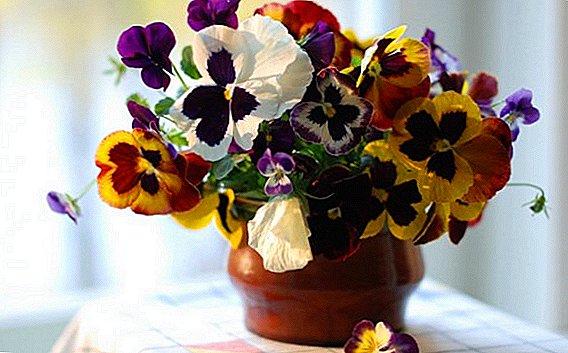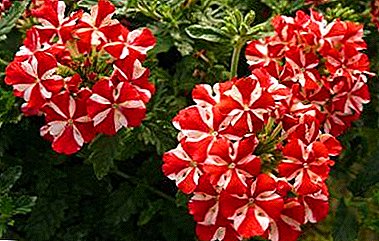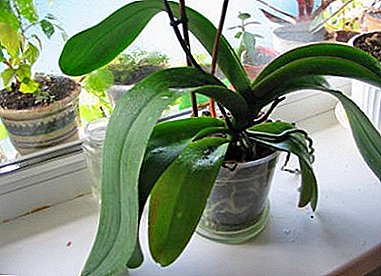
Undoubtedly, flowering is the most beautiful of all phases of the orchid's life cycle, which absolutely all growers are looking forward to. However, do not forget that after flowering the plant requires special care, otherwise it may die. The article will tell you how to care for a beautiful orchid that has blossomed, what to do if you want to preserve the health and beauty of the plant for many years.
Plant life cycle
After the orchid has bloomed, a period of peace comes. At this time, growth and metabolic processes slow down. Rest is necessary for the flower to gain strength for the next life phase. This is the reason for the need for different care in different periods of life.
Important! One of the most popular types of orchids - phalaenopsis - also needs a rest period after flowering, but in this class it is relative because of its continuous growth throughout the year.
A photo
In the photo you can see what an orchid looks like when flowers appear on it:
And this is the escape after flowering:
The nuances of care at home
Before the appearance of the buds
In the spring, the orchid begins the growing season., at this time there is an active growth and activation of the vital processes of the flower, the plant builds up leaf and root mass, ejects the peduncle, lays a flower bud, prepares for flowering.
If before the expected flowering orchid was sick, its roots are poorly developed or the leaves are not healthy, then it is not necessary to allow flowering so as not to weaken the plant even more.
If there are no problems with the health of the roots and leaves, you can safely stimulate flowering, for which you need:
- reduce watering - dry soil will be the impetus for the orchid, because in its natural environment it blooms after the rainy season;
- provide good lighting, if necessary add artificial light;
- apply fertilizer twice a month;
- Maintain high levels of air humidity in the premises, often sprinkling the plant with warm distilled water or placing a container with water nearby;
- maintain the difference in air temperature: at least +23 degrees during the day and at least +18 at night.
Starting to feed the orchid should be immediately after she began active growth and before the first bud blossoms. Fertilizers in liquid form, due to their ability to digest evenly - the best option for feeding orchids. Also an important criterion for choosing a fertilizer is its acidity - the pH should be 5.5-6.5, since neither the acidity of the substrate nor the alkali content can be increased.
 Speaking about fertilizers, it is necessary to say which components and what should be included in them:
Speaking about fertilizers, it is necessary to say which components and what should be included in them:
- potassium - For the formation of buds, carbohydrate metabolism and improve plant immunity;
- nitrogen - activates the growth of green mass of the flower, can inhibit flowering;
- phosphorus - promotes growth and flowering, is responsible for the health of the roots;
- boron and magnesium - accelerate the growing season and the formation of buds;
- iron - stops yellowing and dying of leaves.
We offer to see an informative video about basic orchid care before flowering:
After dropping the petals
So, what should you do next, how to care for the plant after the flowers have flown on it:
- To reduce the amount of fertilizer in half, in order to avoid re-flowering. It is especially important to do this in winter.
- Remove dried peduncle. It is necessary to cut it under the base, but only after its complete drying.
- Change the substrate or completely transplant the plant in a new pot.
- During transplantation, remove all dry and rotted roots, if any.
- Resume watering 2 days after transplanting.
Next, an informative video about the care of an orchid after flowering:
In winter
In winter, caring for an orchid with faded flowers is different from caring for a warm season.:
- watering is 2 times a month;
- fertilizer in the winter is not necessary;
- air temperature should be + 15-20 degrees;
- additional lighting is required;
- eliminate drafts, but regularly air the room;
- warm the flower if it is on the windowsill;
- maintain high humidity.
We offer to watch a video about orchid care in winter time:
Do I need to prune and transplant after flowering?
When and how to trim?
 After there are no buds or buds left on the peduncle, it is imperative to trim the orchid, otherwise it will bloom again, which will weaken the plant.
After there are no buds or buds left on the peduncle, it is imperative to trim the orchid, otherwise it will bloom again, which will weaken the plant.
Cut off the shoot, which were flowers, you need at a distance of 1 cm from the base pre-sanitized scissors or a knife and only when it dries completely. If dormant buds form on the stem, of which processes may appear over time, the peduncle is cut a little higher.
Sometimes, the cut stem is hollow and water may enter the hole that forms during irrigation. In this case, you need to either watering very carefully, or close the opening with beeswax.
Attention! In case of yellowing or darkening of the leaves, they must also be removed.
Next, a visual video trimming the flower after blooming:
How to transplant?
After flowering, orchid needs to replace the substrate.besides, it is necessary to carefully inspect and wash the root system of the plant and remove damaged roots. That is why the plant is better to completely transplant.
Step-by-step instructions on how to care for a faded plant in a pot
- Watering. Reduce watering is necessary only when the onset of cold weather, when the air temperature drops. In this case, the drying of the soil can not be allowed. The rest of the watering mode remains unchanged.
Water for irrigation should be thawed or separated at room temperature. It is also impossible that she fell into the leaf bosoms.
- Top dressing. Being at rest, the orchid should rest, and fertilization will provoke repeated flowering. In order to avoid this, the amount of fertilizer should be reduced and the plant should be fed no more than once a month.
- Substrate and pot. During transplantation, it is necessary to replace the soil, wash and carefully inspect the root system and remove diseased roots if they are detected. If the pot has become a small orchid and the root system does not fit in it, it should be replaced with a larger container.
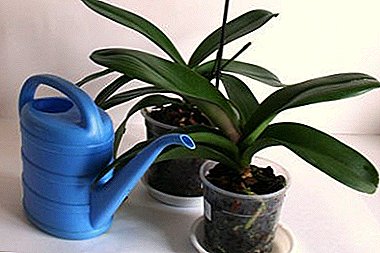 Lighting. The orchid should not be in the shade, it needs light, but contact with direct sunlight should be excluded. In the case of reduced daylight, use additional artificial light in the form of a phytolamp, located 30 cm from the flower.
Lighting. The orchid should not be in the shade, it needs light, but contact with direct sunlight should be excluded. In the case of reduced daylight, use additional artificial light in the form of a phytolamp, located 30 cm from the flower.- Humidity and temperature. It is necessary to maintain air humidity at the level of 50-80% and temperature + 20-23 degrees.
- Transferring the place of cultivation. If the place for an orchid is chosen correctly and there is enough light for it, then there is no need to rearrange it.
Possible mistakes
Without taking into account the phase of the life cycle of an orchid, one can make a huge number of mistakes that can lead to the cessation of flowering, plant disease and even its death. What should not be caring for an orchid after it blooms:
- the use of hormonal drugs to stimulate flowering - as a result, the orchid may become sick or die;
- abundant watering throughout the year - because of this, the root system may begin to rot, and diseases can develop;
- improper watering - if you water the orchid from the watering can, moisture will collect and stagnate in the pan, which will cause the roots to rot;
- lack of lighting - without light, the orchid will weaken, and will not bloom, and maybe even die;
- late detection of the disease leads to the death of the plant.
If you give maximum attention to an orchid and provide it with comfortable conditions and proper care, it will grow healthy and regularly delight those around you with wonderful flowers.


 Lighting. The orchid should not be in the shade, it needs light, but contact with direct sunlight should be excluded. In the case of reduced daylight, use additional artificial light in the form of a phytolamp, located 30 cm from the flower.
Lighting. The orchid should not be in the shade, it needs light, but contact with direct sunlight should be excluded. In the case of reduced daylight, use additional artificial light in the form of a phytolamp, located 30 cm from the flower.